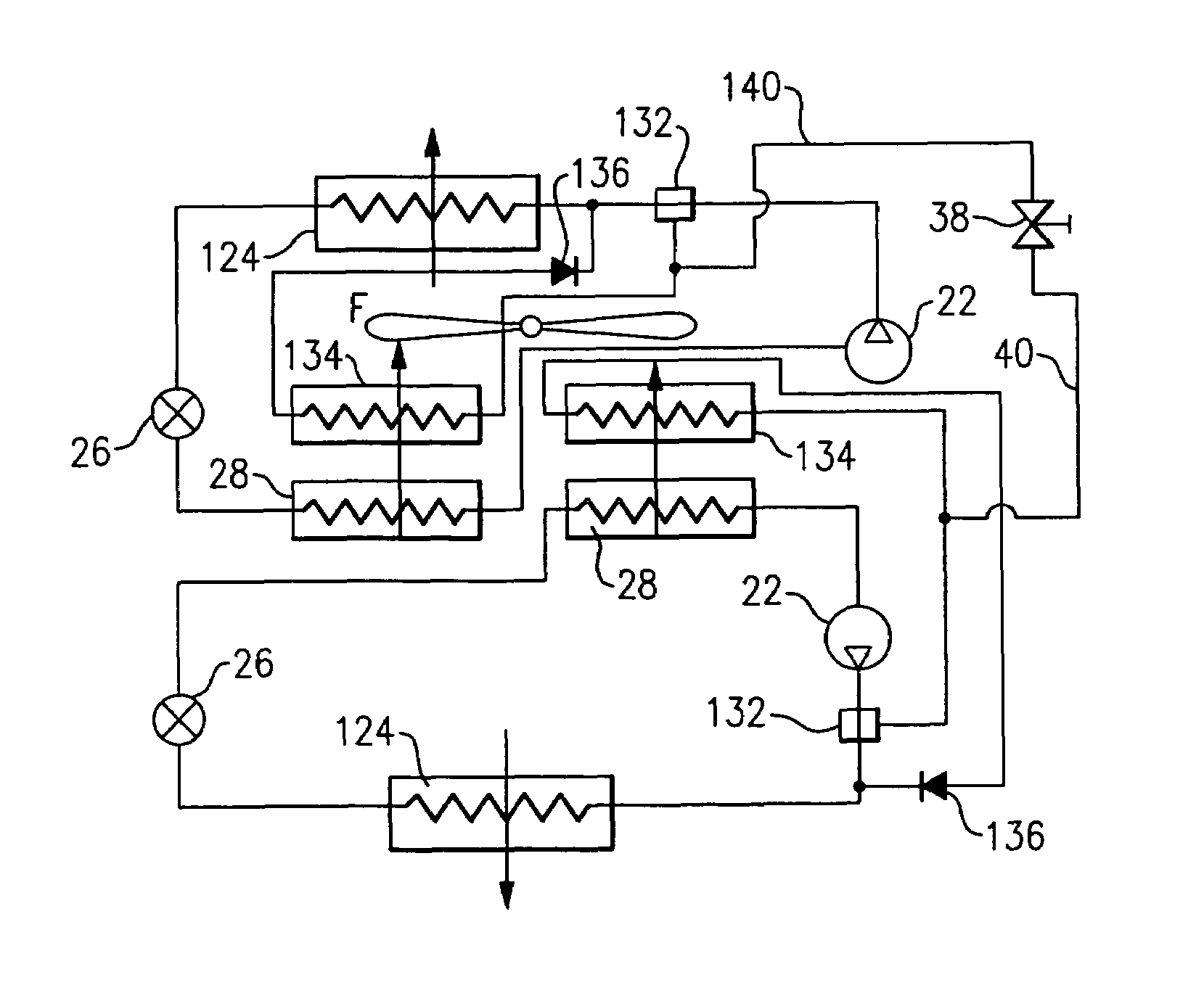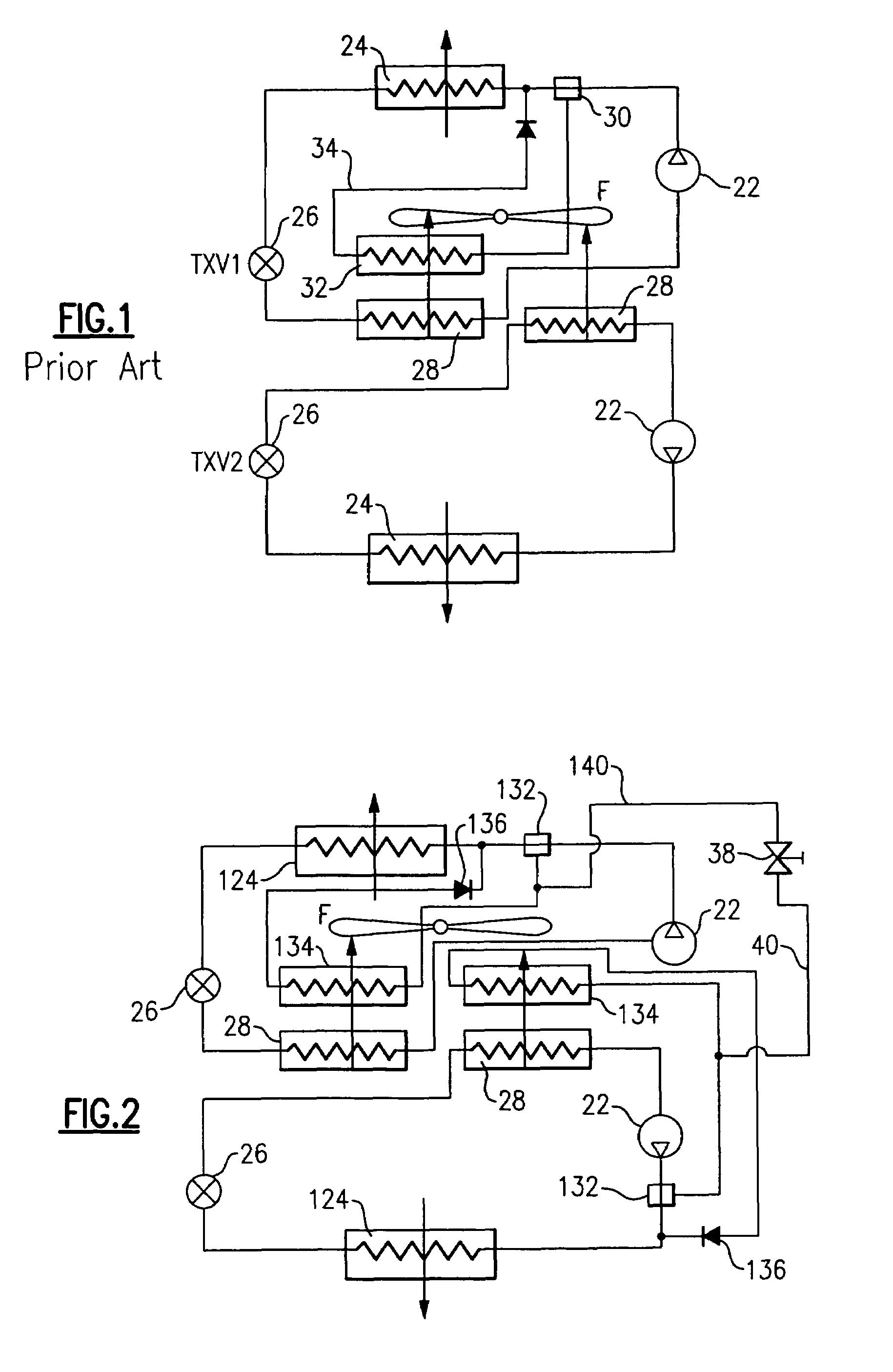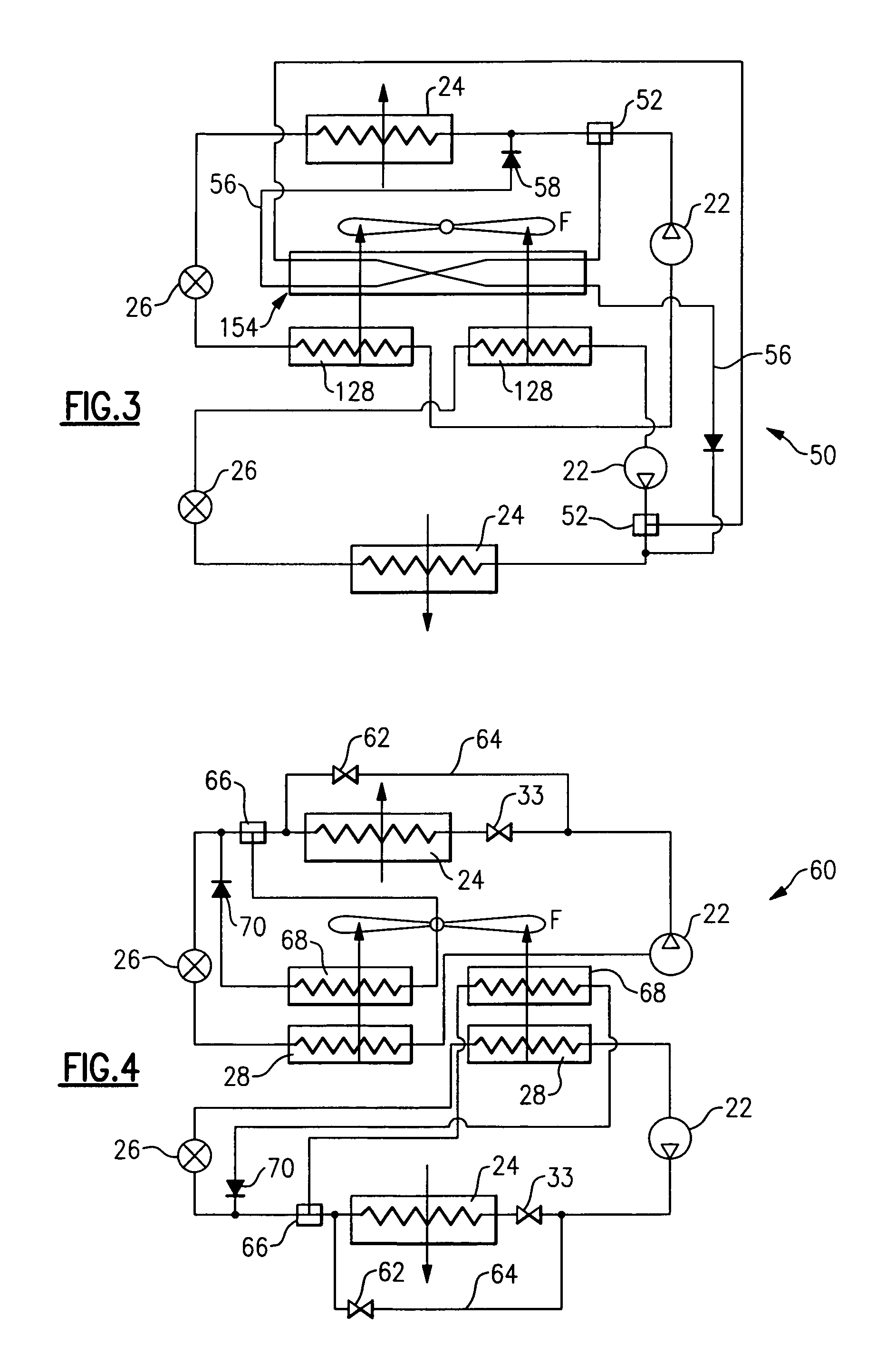Multi-circuit refrigerant cycle with dehumidification improvements
a refrigerant cycle and multi-circuit technology, applied in the field of multi-circuit refrigerant systems, can solve problems such as design challenges for refrigerant cycle designers, and achieve the effect of improving component reliability and improving system efficiency
- Summary
- Abstract
- Description
- Claims
- Application Information
AI Technical Summary
Benefits of technology
Problems solved by technology
Method used
Image
Examples
Embodiment Construction
[0013]A prior art refrigerant system 20 is illustrated in FIG. 1 as a two-circuit system, with two discrete circuits that do not communicate with each other. Each of two circuits includes a compressor 22, a condenser 24, a main expansion device 26, and an evaporator 28. As known, indoor air to be conditioned passes over the evaporator 28 to be cooled and typically dehumidified when the refrigerant system 20 is in operation. One of the circuits is provided with a reheat coil 32. A selectively operable three-way valve 30 is opened to pass at least a portion of refrigerant through the reheat coil 32 when humidity of the conditioned space is still higher than desired, but temperature of that space falls below the comfort level, requiring the reheat function to be activated. Although only one of many known reheat schematics is shown for illustration purposes, a person ordinarily skilled in the art can envision other reheat concepts implemented as well. In the schematic shown on FIG. 1, t...
PUM
 Login to View More
Login to View More Abstract
Description
Claims
Application Information
 Login to View More
Login to View More - R&D
- Intellectual Property
- Life Sciences
- Materials
- Tech Scout
- Unparalleled Data Quality
- Higher Quality Content
- 60% Fewer Hallucinations
Browse by: Latest US Patents, China's latest patents, Technical Efficacy Thesaurus, Application Domain, Technology Topic, Popular Technical Reports.
© 2025 PatSnap. All rights reserved.Legal|Privacy policy|Modern Slavery Act Transparency Statement|Sitemap|About US| Contact US: help@patsnap.com



